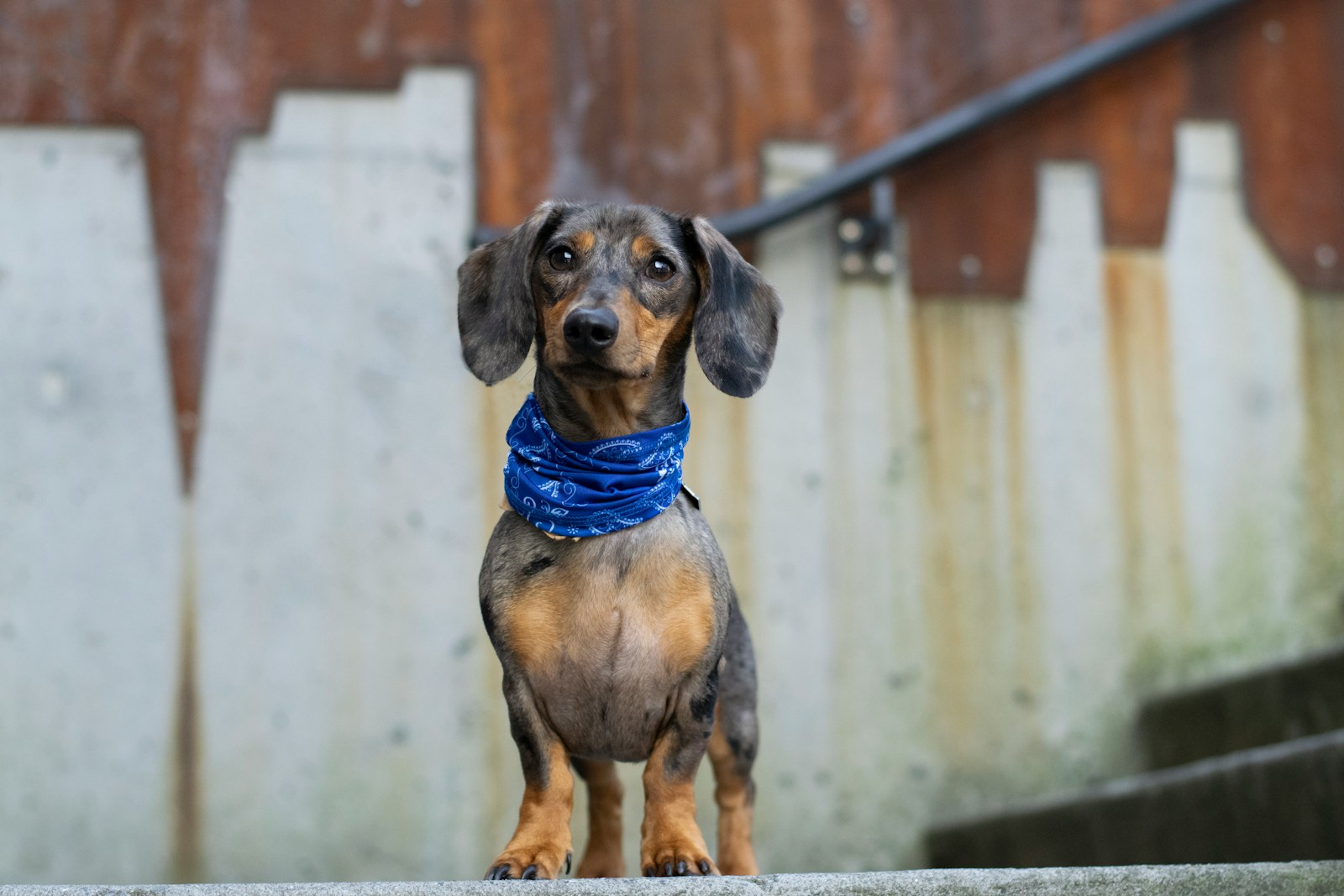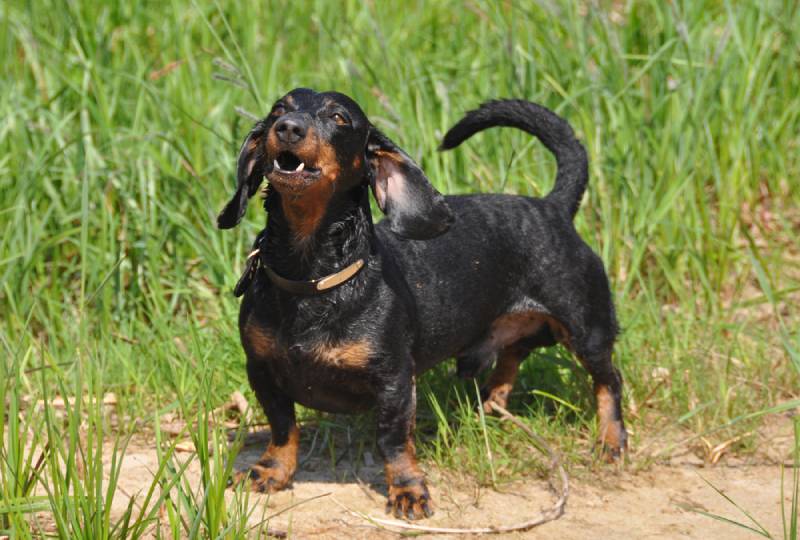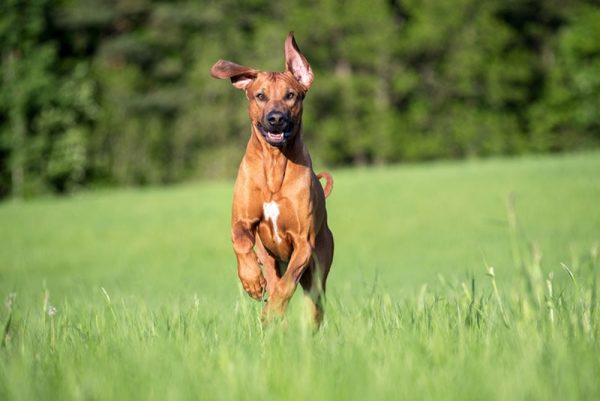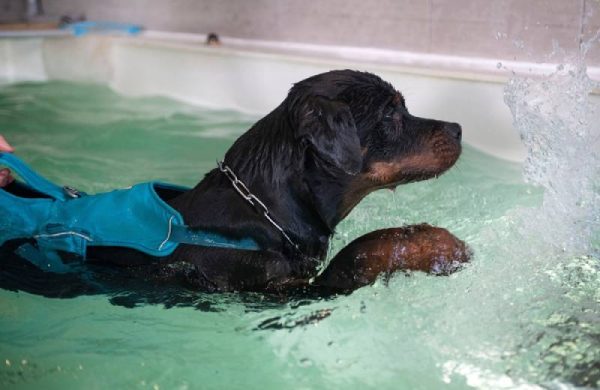In this article
Dachshunds are small, so many people think that they don’t need much exercise. However, the truth is that all dogs, even Dachshunds, require daily exercise outdoors to stay healthy and strong throughout their lives. Walking is a common form of exercise for canines. So, you might wonder how far your Dachshund can and should walk when you head out on adventures together. The short answer is that it varies depending on the individual Dachshund.
Depending on things like age, health, and lifestyle as well as whether you have a standard or miniature Dachshund, your Dachshund might be able to walk just 1/2 a mile or go on to cover a couple of miles before needing rest. While there are no official walking distance recommendations, the People’s Dispensary for Sick Animals does recommend that standard-sized Dachshunds get at least 1 hour’s worth of exercise each day and that miniatures get at least 30 minutes of exercise a day.1
Unless an injury or ailment is in play, most Dachshunds should be able to walk about 1 mile at a time without a problem. Here’s everything else that you need to know.

Why Dachshunds Need Daily Walks for Exercise
Walking is a safe, low-impact form of exercise that is not too hard on the joints and bones yet provides many of the same cardiovascular benefits that running and jumping do. It can help your dog maintain a healthy weight and a lean body, both of which are important when it comes to fighting off problems like joint disease. Other benefits of walking your Dachshund regularly include:
- Staying mobile and maintaining good joint health
- Keeping muscles strong and vibrant throughout life
- Regulating a healthy digestive system
- Maintaining optimal mental health
- Managing positive emotional health
These are benefits that humans can also experience by taking daily walks with their Dachshunds! Walking together gives you and your dog an opportunity to strengthen your bond, which can help you better understand and communicate with each other overall.

The Dangers of Too Little Exercise for Dachshunds
If a Dachshund does not get enough daily exercise, it can negatively impact their quality of life as they age. Too little exercise can quickly lead to weight gain and may even result in the development of obesity and related problems like heart disease and joint disease. A lack of exercise can also make a dog depressed and even anxious because they don’t have an outlet for their pent-up energy.
Spending too much time lounging around can lead to muscle loss and stiff and painful joints. Unused joints and muscles will then feel sore and dysfunctional when they do get used. Daily joint motion is an effective way to ward off problems like arthritis and immobility. One common thing that happens with dogs that don’t get enough exercise is that they turn into lazy “couch potatoes” that don’t want to be bothered with activities inside or outside of the house. This withdrawn behavior can be a consequence of too little mental and physical stimulation.
The Dangers of Too Much Exercise for Dachshunds
There are also a few dangers of walking Dachshunds too much that current and potential owners should be aware of. For one thing, it can put too much wear and tear through their joints, particularly if the dog is young, which can lead to problems with mobility as the animal gets older.
Because Dachshunds have short legs, long backs and unusually shaped joints, it puts them at high risk of joint injury if they are over-exercised. Your dog may let you know that they’re getting too much exercise by showing a lack of interest in the activities that they usually enjoy because they’re simply too tired or sore.

Exercise Ideas for Dachshunds
While walking is typically considered the most effective, the typical Dachshund can partake in many kinds of exercise safely and healthily during their prime. These dogs love to run, but doing so too often or aggressively can be a strain on their little bodies. Therefore, controlled running should be practiced. This involves monitoring and managing the length and duration of a run. Always consult a veterinarian for guidelines on what is and isn’t acceptable during runs.
Swimming is an activity that Dachshunds can learn to enjoy and that does not put too much pressure on their joints or back. Due to their size, swimming doesn’t have to take place in a large body of water; a shallow paddling pool will do. However, these dogs can enjoy swimming in pools, lakes, rivers, and even oceans with close supervision. Other exercise options include:
- Fetch: Short sessions of fetch in the yard or at the dog park can be a fun way to pass the time. Make sure you’re playing on a soft surface such as grass and not on the concrete to reduce pressure on the joints.
- Hide-and-Seek: Both indoors and outside, it can be fun to hide from the dog and then let them sniff you out.
- Puzzle Toys: Filling a puzzle toy with healthy treats can help keep a Dachshund entertained while exercising both their body and brain. This is a great option for those rainy days when getting outside isn’t an option.
Exercises That Dachshunds Should Not Engage In
The Dachshund has a long back, and as such, strenuous activity can cause pain and even chronic injuries that are avoidable. These dogs should not be allowed to engage in agility activities, jump up and down on furniture or other elevated items regularly, go up and down stairs as part of daily life, or run too fast or too often. Your veterinarian can provide you with guidelines to address any specific back or joint issues that you might be worried about.
Determining Your Dachshund’s Walking and Exercising Needs
In general, a Dachshund can walk about 1 mile and should get at least 1 hour’s worth of exercise without a problem. However, the most accurate way to figure out how much exercise your dog needs each day and how far they can safely walk at a time is to consult with a trusted veterinarian. They can perform a physical exam and refer to your dog’s health records to determine what likely is and isn’t healthy for them in terms of exercise. They can also address any issues that might be hampering your efforts to get your pet to be more active.


Final Thoughts
The Dachshund is a special breed of dog that loves exercising with their human companions as part of a bonding experience. These energetic little dogs love to run and play, but their fragile backs must be a priority when supervising their activity. If in doubt, contact a veterinarian for advice and guidance.
Featured Image Credit: Radomir Rezny, Shutterstock



















